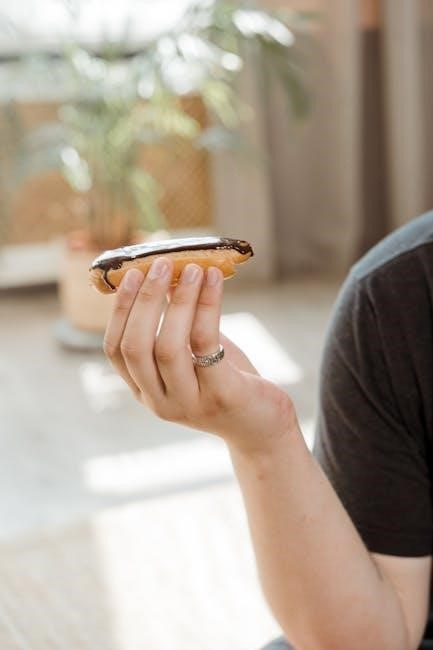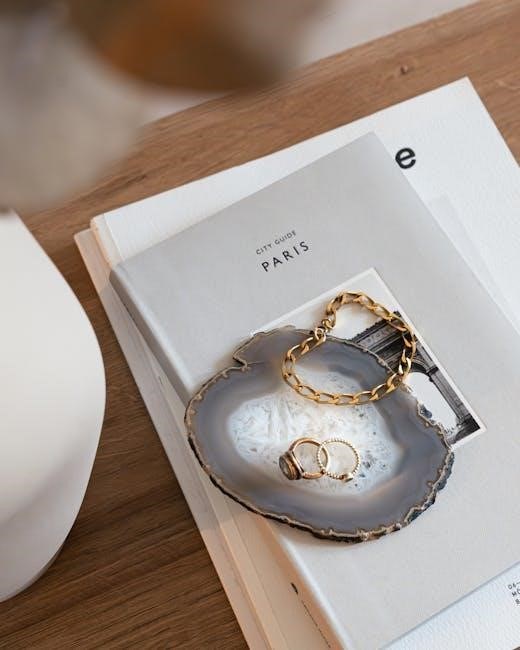Welcome to our comprehensive Ring Size Guide, designed to help you find the perfect fit for your ring. Whether you’re shopping for an engagement ring, a wedding band, or a fashion accessory, understanding ring sizing is essential. This guide will walk you through various methods to determine your ring size, including measuring your finger, using existing rings, and converting sizes across international standards. Discover how factors like time of day, temperature, and ring design can affect your size. Ensure a comfortable and accurate fit with our expert tips and tools, making your ring-wearing experience truly enjoyable.

How to Measure Your Finger for Ring Size
To measure your finger for ring size, start by measuring at different times of the day, as finger size can fluctuate due to temperature and activity. Use a ruler or printable ring size chart to ensure accuracy. Wrap a string or strip of paper snugly around the base of your finger, ensuring it’s neither too tight nor too loose. Measure the length of the string or use the chart to determine your size. Consider the width of the ring band, as wider bands may require a slightly larger size for comfort. For the most accurate fit, measure the internal diameter of an existing well-fitting ring or consult a professional jeweler to avoid common mistakes like improper tightness or timing of measurement.
2.1. Step-by-Step Measurement Process
Start by printing a ring size guide and ensuring the scale is accurate by measuring the 30mm bar with a ruler. Next, wrap a string or strip of paper snugly around the base of your finger, marking the point where it overlaps. Measure the length of the string or use the chart to find your size. For best results, measure at the end of the day when fingers are slightly larger. Avoid measuring when hands are cold, as this can lead to a smaller size. Repeat the process for both hands, as finger sizes may differ slightly.
2.2. Best Practices for Accurate Measurement
For precise ring sizing, measure your finger at the end of the day when it’s largest. Avoid measuring when hands are cold, as fingers tend to be smaller. Use a ring sizer tool or a snug-fitting strip of paper to wrap around the base of your finger. Ensure the fit is comfortable, not too tight or loose. If unsure, consider the average size for your gender or consult a professional jeweler for an accurate assessment. Consistency is key to finding the perfect fit.
How to Measure an Existing Ring
Measure an existing ring by placing it on a flat surface and using a ruler or measuring tape to determine its inner diameter in millimeters or inches. This method ensures accuracy and helps find the corresponding ring size using a conversion chart. It’s a practical way to determine your size without needing to measure your finger directly, ensuring a perfect fit for your new ring. This technique is especially useful when purchasing online or designing a custom piece.
3.1. Using a Ruler or Measuring Tape
To measure an existing ring using a ruler or measuring tape, place the ring on a flat surface and align the ruler with the inner edge. Measure the inner diameter in millimeters or inches, ensuring accuracy. Note the measurement and compare it to a ring size chart to determine the corresponding size. For best results, use a ruler with millimeter markings and measure at room temperature, as metal can expand or contract slightly with temperature changes. This method is both simple and reliable for finding the correct size.
3.2. Printable Ring Size Chart Method
Using a printable ring size chart is a convenient way to measure an existing ring. Download and print the chart, ensuring the scale is accurate by measuring the 30mm reference line. Place the ring over the circular openings on the chart, starting with the smallest size. The ring should fit snugly without slipping through. This method is ideal for those who prefer a visual and hands-on approach to determining their ring size accurately and effortlessly at home.
International Ring Size Conversion Chart
Explore our detailed chart to convert ring sizes across global standards, ensuring accurate fits for US, UK, Europe, Asia, and more. Perfect for international jewelry shopping.
4.1. US & Canada vs. UK & Australia
The US and Canada use numerical ring sizes (e.g., 4-16), while the UK and Australia use alphabetical sizes (e.g., A-Z). These systems differ significantly, with US/Canada sizes based on the inside diameter of the ring in millimeters, and UK/Australia sizes following a more gradual scale. For example, a US size 6 corresponds to a UK size L. Always refer to an international conversion chart to ensure accuracy when comparing or converting sizes between these regions for a perfect fit.
4.2. European Sizes (France, Germany, Russia, etc.)
In Europe, ring sizes are often based on the inner circumference of the ring, measured in millimeters. Countries like France, Germany, and Russia use a numerical system where sizes range from 40 to 80. For example, a US size 6 corresponds to a European size 50. This system ensures precise measurements, but varies slightly across countries. Always use an international conversion chart to align European sizes with your desired fit, ensuring comfort and accuracy when purchasing or sizing rings.
4.3. Asian Countries (Japan, China, India, etc.)
In Asian countries like Japan, China, and India, ring sizes are typically measured using a numerical system, with sizes ranging from 1 to 30. These sizes correspond to the inner diameter of the ring in millimeters. For example, a US size 6 often equates to a Japanese size 12. Some countries may have slight variations, so using an international conversion chart is essential. To ensure accuracy, measure the inner diameter or consult a professional jeweler, especially when converting between Asian and Western sizing standards.

Factors Affecting Ring Size
Time of day, temperature, and ring design can influence your ring size. Fingers may swell in heat or shrink in cold, and wider bands might require a larger size for comfort.
5.1. Time of Day and Temperature
Your ring size can vary due to changes in finger size throughout the day and temperature fluctuations. Fingers tend to swell slightly in the afternoon and in warmer environments, while they may shrink in the morning or in cooler conditions. This natural fluctuation can affect how a ring fits, making it essential to measure your finger at different times to determine the most accurate size. Consistency in measurement timing is key for the best fit.
5.2. Ring Design and Comfort Fit
Ring design and comfort fit significantly impact the fit. Wider bands or rings with intricate details may require a larger size for comfort. Comfort-fit rings, which have a rounded interior, can feel more spacious. Conversely, slimmer rings may fit more snugly. Consider the style when choosing your size, as some designs naturally accommodate finger shape and movement better than others. Ensuring the ring’s design aligns with your comfort preferences is crucial for a satisfying wear.

Tools for Determining Ring Size
Utilize practical tools like a printable ring sizer or digital apps to measure your finger or existing rings. These tools ensure accuracy and convenience for determining your size.
6.1. Printable Ring Sizer Tool
A printable ring sizer tool is a convenient solution for measuring your ring size at home. Simply download and print the chart, ensuring the scale is accurate by measuring the 30mm bar. Place a well-fitting ring on the circles or wrap the strip around your finger to find your size. This tool is especially useful for those without access to a jeweler, providing an easy way to determine your size accurately and instantly.
6.2. Digital Ring Size Apps
Digital ring size apps offer a modern and convenient way to determine your ring size. These apps use your smartphone’s camera to measure your finger or an existing ring, providing accurate results instantly. Many apps also allow you to compare sizes across international standards, ensuring compatibility wherever you shop. Some apps even use augmented reality (AR) to visualize how a ring would look on your finger. For the best results, measure at different times of day and consider the width of the ring band for optimal comfort and fit.
How to Use a Ring Size Conversion Calculator
Using a ring size conversion calculator is a straightforward process that ensures accuracy across international sizing standards. Simply input your known ring size from one country, and the calculator will convert it to equivalent sizes in other regions, such as US, UK, EU, or Japan. Some calculators also allow you to input the inner diameter or circumference of a ring in millimeters or inches for precise conversions. This tool is especially useful for online shoppers purchasing from international retailers, ensuring a perfect fit regardless of the sizing system used.

Tips for Choosing the Right Ring Size
Measure your finger at the end of the day for accuracy. Consider wider bands may require a slightly larger size. Consult a jeweler if unsure for a perfect fit.
8.1. Accounting for Wide Bands or Stackable Rings
When choosing a ring size for wide bands or stackable rings, consider sizing up by 1/4 to 1/2 sizes for comfort. Wide bands take up more space on the finger, so a slightly larger size ensures a snug yet comfortable fit. For stackable rings, each ring adds thickness, so account for the total combined width. Measure your finger at the end of the day for accuracy. Using a ring sizer tool can help determine the best fit without guessing, ensuring your rings feel great all day.
8.2. When to Consult a Professional Jeweler
If you’re unsure about your ring size or need a precise fit, consulting a professional jeweler is highly recommended. They can measure your finger accurately and provide expert advice on comfort fit vs. standard fit. This is especially important for expensive or custom rings, as a proper fit ensures long-term wearability. Jewelers can also accommodate unique finger shapes or sizing challenges, ensuring your ring feels comfortable and looks great. Don’t hesitate to seek their expertise for a flawless fit.
Common Mistakes to Avoid When Measuring Ring Size
Measuring your ring size accurately requires attention to detail to avoid common mistakes. One major error is measuring your finger at the wrong time of day, as fingers can swell or shrink due to temperature or activity. Another mistake is not accounting for knuckle size, as the ring must pass comfortably. Using a ring that doesn’t fit well as a reference can also lead to inaccuracies. Additionally, ignoring the width of the band or not considering comfort fit vs. standard fit can result in an uncomfortable or ill-fitting ring. Always double-check your measurements and consult a professional if unsure.
Accurate ring sizing is crucial for a perfect fit and lasting comfort. By following the guidelines in this ring size guide, you can confidently determine your size using various methods, from measuring your finger to converting international standards. Remember to consider factors like time of day, temperature, and ring design. If unsure, consulting a professional jeweler ensures precision. With the right tools and knowledge, you’ll find the ideal ring size for a comfortable, stylish, and enjoyable wearing experience.
